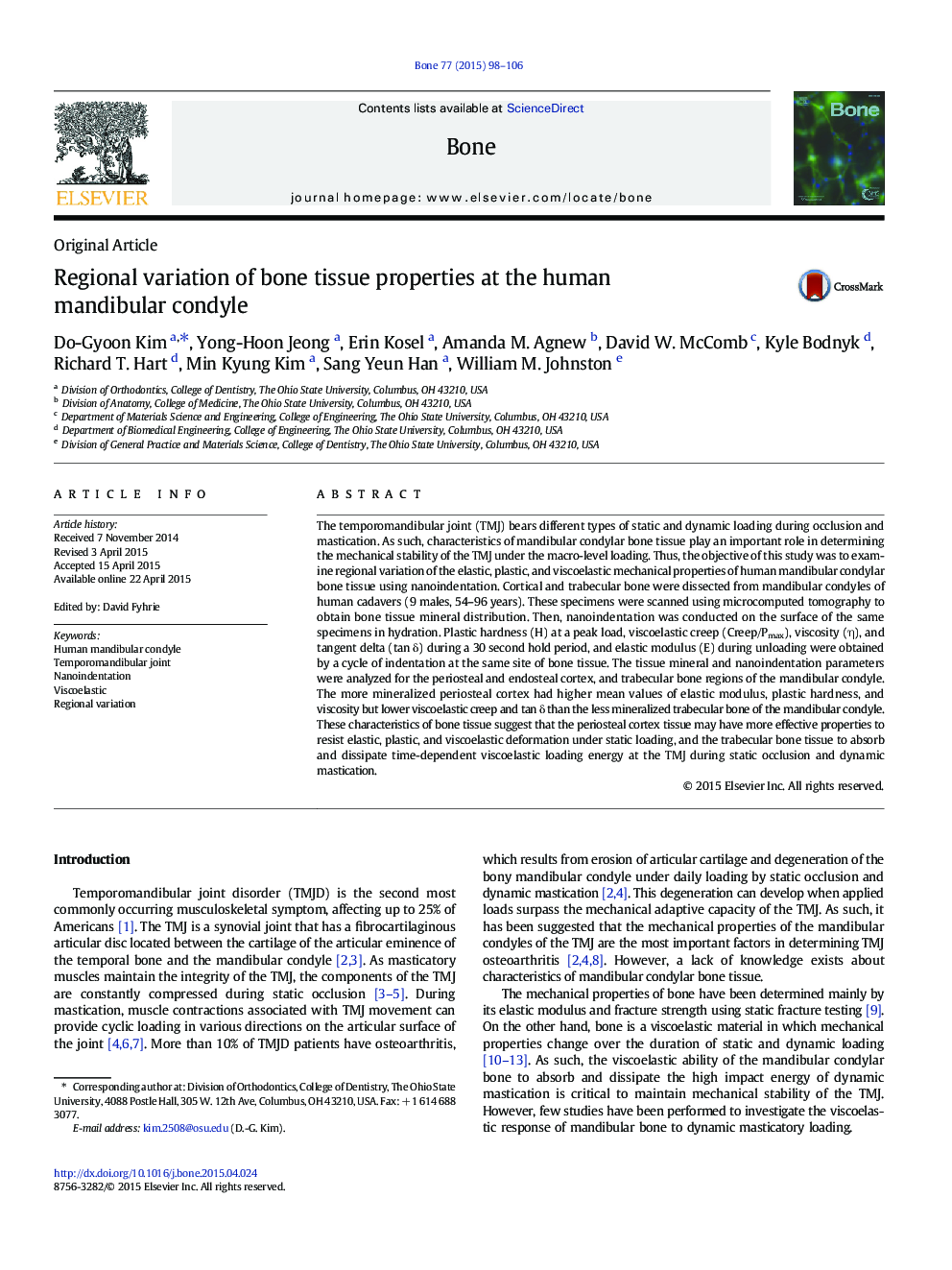| کد مقاله | کد نشریه | سال انتشار | مقاله انگلیسی | نسخه تمام متن |
|---|---|---|---|---|
| 5889697 | 1568142 | 2015 | 9 صفحه PDF | دانلود رایگان |
- Bone tissue mineralization and nanoindentation parameters vary at the human mandibular condyle
- Modulus, hardness, and viscosity are greater in the cortex than the trabecular bone tissue
- Trabecular bone has higher viscoelastic creep and tan δ than the periosteal cortex
- These characteristics could reflect adaption to functional demands during mastication
The temporomandibular joint (TMJ) bears different types of static and dynamic loading during occlusion and mastication. As such, characteristics of mandibular condylar bone tissue play an important role in determining the mechanical stability of the TMJ under the macro-level loading. Thus, the objective of this study was to examine regional variation of the elastic, plastic, and viscoelastic mechanical properties of human mandibular condylar bone tissue using nanoindentation. Cortical and trabecular bone were dissected from mandibular condyles of human cadavers (9 males, 54-96 years). These specimens were scanned using microcomputed tomography to obtain bone tissue mineral distribution. Then, nanoindentation was conducted on the surface of the same specimens in hydration. Plastic hardness (H) at a peak load, viscoelastic creep (Creep/Pmax), viscosity (η), and tangent delta (tan δ) during a 30 second hold period, and elastic modulus (E) during unloading were obtained by a cycle of indentation at the same site of bone tissue. The tissue mineral and nanoindentation parameters were analyzed for the periosteal and endosteal cortex, and trabecular bone regions of the mandibular condyle. The more mineralized periosteal cortex had higher mean values of elastic modulus, plastic hardness, and viscosity but lower viscoelastic creep and tan δ than the less mineralized trabecular bone of the mandibular condyle. These characteristics of bone tissue suggest that the periosteal cortex tissue may have more effective properties to resist elastic, plastic, and viscoelastic deformation under static loading, and the trabecular bone tissue to absorb and dissipate time-dependent viscoelastic loading energy at the TMJ during static occlusion and dynamic mastication.
Journal: Bone - Volume 77, August 2015, Pages 98-106
